Related Research Articles

The Underground Railroad was a network of secret routes and safe houses established in the United States during the early to mid-19th century. It was used by enslaved African Americans primarily to escape into free states and from there to Canada. The network, primarily the work of free African Americans, was assisted by abolitionists and others sympathetic to the cause of the escapees. The slaves who risked capture and those who aided them are also collectively referred to as the passengers and conductors of the Railroad, respectively. Various other routes led to Mexico, where slavery had been abolished, and to islands in the Caribbean that were not part of the slave trade. An earlier escape route running south toward Florida, then a Spanish possession, existed from the late 17th century until approximately 1790. However, the network generally known as the Underground Railroad began in the late 18th century. It ran north and grew steadily until the Emancipation Proclamation was signed by President Abraham Lincoln. One estimate suggests that, by 1850, approximately 100,000 slaves had escaped to freedom via the network.
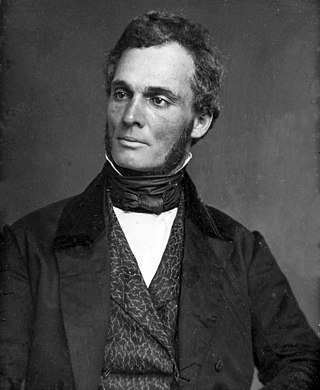
Robert Purvis was an American abolitionist in the United States. He was born in Charleston, South Carolina, and was likely educated at Amherst Academy, a secondary school in Amherst, Massachusetts. He spent most of his life in Philadelphia, Pennsylvania. In 1833 he helped found the American Anti-Slavery Society and the Library Company of Colored People. From 1845 to 1850 he served as president of the Pennsylvania Anti-Slavery Society and also traveled to Britain to gain support for the movement.

Thomas Garrett was an American abolitionist and leader in the Underground Railroad movement before the American Civil War. He helped more than 2,500 African Americans escape slavery.

John Hunn was an American businessman and politician from Camden, Delaware. The first governor elected after a reform of Delaware's state constitution and a compromise candidate, Hunn served from 1901 until 1905 and became the first of a multi-decade string of elected Republican Delaware governors.

John Hunn was an American farmer and abolitionist who was a "station master" of the Underground Railroad in Delaware, the southernmost stationmaster and responsible for slaves escaping up the Delmarva Peninsula.

Samuel D. Burris was a member of the Underground Railroad. He had a family, who he moved to Philadelphia for safety and traveled into Maryland and Delaware to guide freedom seekers north along the Underground Railroad to Pennsylvania.
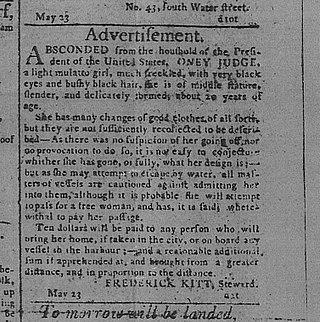
When the Dutch and Swedes established colonies in the Delaware Valley of what is now Pennsylvania, in North America, they quickly imported enslaved Africans for labor; the Dutch also transported them south from their colony of New Netherland. Enslavement was documented in this area as early as 1639. William Penn and the colonists who settled in Pennsylvania tolerated slavery. Still, the English Quakers and later German immigrants were among the first to speak out against it. Many colonial Methodists and Baptists also opposed it on religious grounds. During the Great Awakening of the late 18th century, their preachers urged slaveholders to free their slaves. High British tariffs in the 18th century discouraged the importation of additional slaves, and encouraged the use of white indentured servants and free labor.

Slavery in Maryland lasted over 200 years, from its beginnings in 1642 when the first Africans were brought as slaves to St. Mary's City, to its end after the Civil War. While Maryland developed similarly to neighboring Virginia, slavery declined in Maryland as an institution earlier, and it had the largest free black population by 1860 of any state. The early settlements and population centers of the province tended to cluster around the rivers and other waterways that empty into the Chesapeake Bay. Maryland planters cultivated tobacco as the chief commodity crop, as the market for cash crops was strong in Europe. Tobacco was labor-intensive in both cultivation and processing, and planters struggled to manage workers as tobacco prices declined in the late 17th century, even as farms became larger and more efficient. At first, indentured servants from England supplied much of the necessary labor but, as England's economy improved, fewer came to the colonies. Maryland colonists turned to importing indentured and enslaved Africans to satisfy the labor demand.

Slavery in Virginia began with the capture and enslavement of Native Americans during the early days of the English Colony of Virginia and through the late eighteenth century. They primarily worked in tobacco fields. Africans were first brought to colonial Virginia in 1619, when 20 Africans from present-day Angola arrived in Virginia aboard the ship The White Lion.

The New Castle Court House Museum is the center of a circle with a 12-mile radius that defines most of the border between the states of Delaware and Pennsylvania and parts of the borders between Delaware and New Jersey and Maryland.
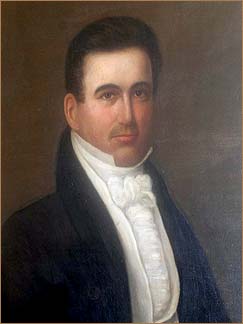
James Booth Jr. was the chief justice of what later became the Delaware Supreme Court from 1841 until his death in 1855.
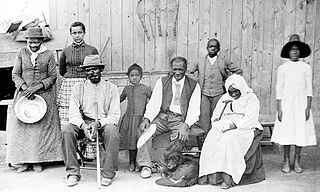
Harriet Tubman (1822 – 1913) was an American abolitionist and political activist. Tubman escaped slavery and rescued approximately 70 enslaved people, including members of her family and friends. Harriet Tubman's family includes her birth family; her two husbands, John Tubman and Nelson Davis; and her adopted daughter Gertie Davis.

The Dover Eight refers to a group of eight black people who escaped their slaveholders of the Bucktown, Maryland area around March 8, 1857. They were helped along the way by a number of people from the Underground Railroad, except for Thomas Otwell, who turned them in once they had made it north to Dover, Delaware. There, they were lured to the Dover jail with the intention of getting the $3,000 reward for the eight men. The Dover Eight escaped the jail and made it to Canada.
William Brinkley was a conductor on the Underground Railroad who helped more than 100 people achieve freedom by traveling from Camden, Delaware, past the "notoriously dangerous" towns of Dover and Smyrna north to Blackbird and sometimes as far as Wilmington, which was also very dangerous for runaway enslaved people. Some of his key rescues include the Tilly Escape of 1856, the Dover Eight in the spring of 1857, and the rescue of 28 people, more than half of which were children, from Dorchester County, Maryland. He had a number of pathways that he would take to various destinations, aided by his brother Nathaniel and Abraham Gibbs, other conductors on the railroad.
Isaac S. Flint was an Underground Railroad station master, lecturer, farmer, and a teacher. He saved Samuel D. Burris, a conductor on the Underground Railroad, from being sold into slavery after having been caught helping runaway enslaved people.

Ann Maria Jackson was an enslaved woman with nine children who ran away from her enslaver in November 1858 after two of her eldest children had been sold. Her husband became mentally ill and died in a poor house. After finding out that four more of her children were about to be sold, she gathered the seven children who were with her and traveled along the Underground Railroad for Canada. She went through the way of Wilmington, then to Philadelphia, later to St.Catherines, and then to Toronto. This was rare as she had brought her seven children with her through the Underground Railroad. It was difficult for women to run away secretly. The Jacksons established new lives for themselves in Toronto. Her two eldest children later reunited with the family, and the youngest, Albert Jackson, became the first African American to work as a letter carrier in Toronto.
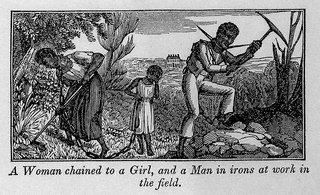
Marriage of enslaved people in the United States was generally not legal before the American Civil War (1861–1865). Enslaved African Americans were considered chattel legally, and they were denied human or civil rights until the United States abolished slavery with the passage of the Thirteenth Amendment to the United States Constitution. Both state and federal laws denied, or rarely defined, rights for enslaved people.

A group of 28 enslaved people from Maryland escaped their slaveholders on October 24, 1857. They were a group of two dozen enslaved men, women, and children who fled from Dorchester County, Maryland. Four men joined their group to travel north along the Underground Railroad.

Sam Houston was a slaveholder who had a complicated history with the institution of slavery. He was the president of the independent Republic of Texas, which was founded as a slave-holding nation, and governor of Texas after its 1845 annexation to the union as a slave state. He voted various times against the extension of slavery into the Western United States and he did not swear an oath to the Confederate States of America, which marked the end of his political career.
Wright Modlin or Wright Maudlin (1797–1866) helped enslaved people escape slavery, whether transporting them between Underground Railroad stations or traveling south to find people that he could deliver directly to Michigan. Modlin and his Underground Railroad partner, William Holden Jones, traveled to the Ohio River and into Kentucky to assist enslave people on their journey north. Due to their success, angry slaveholders instigated the Kentucky raid on Cass County of 1847. Two years later, he helped free his neighbors, the David and Lucy Powell family, who had been captured by their former slaveholder. Tried in South Bend, Indiana, the case was called The South Bend Fugitive Slave Case.
References
- 1 2 3 4 5 6 7 8 9 "The People: Emeline & Sam Hawkins". Division of Historical and Cultural Affairs - State of Delaware. Retrieved 2021-06-17.
- 1 2 3 4 5 6 7 8 9 10 11 12 "Emeline Hawkins MSA SC 5496-15142". State of Maryland Archives. Retrieved 2021-06-17.
- 1 2 Pauly, Megan. "History Matters: Thomas Garrett's trial of 1848". www.delawarepublic.org. Retrieved 2021-06-17.
- 1 2 3 4 5 6 7 "Aboard the Underground Railroad-- Rush R. Sloane House". www.nps.gov. Retrieved 2021-06-17.
- 1 2 3 4 5 6 "Quakers & Slavery : Thomas Garrett". web.tricolib.brynmawr.edu. Retrieved 2021-06-17.